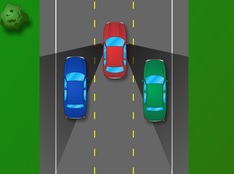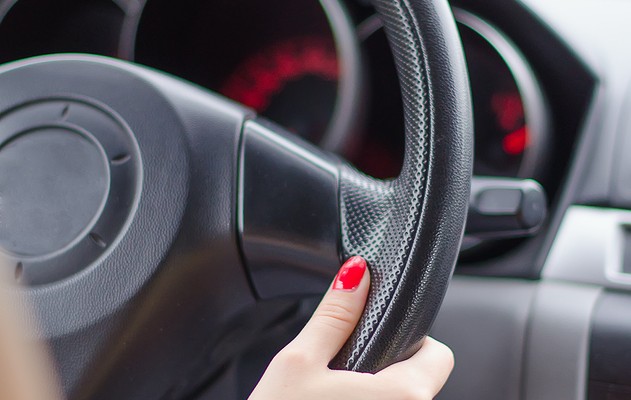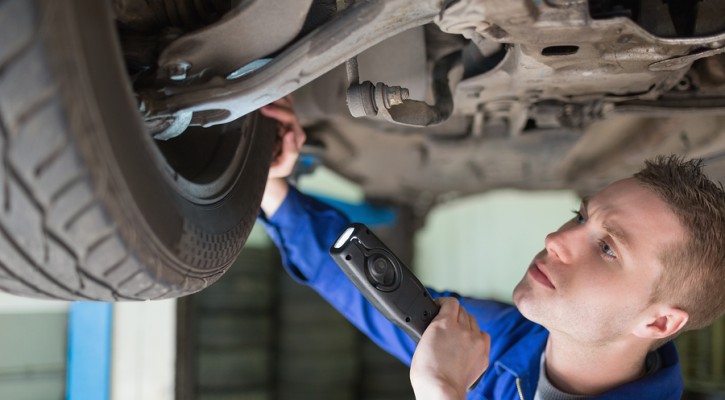Category Archive: Ask the Driving School Instructor

Ask The Driving School Instructor: Getting Rid Of Blind Spots
July 28, 2014
Question: What are blind spots and how do you get rid of them?
Answer: Blind spots are those areas toward the rear of your vehicle on each side that you can’t see in your rearview mirrors. You can’t get rid of them but you can reduce them tremendously.
Checking your blind spot before making a lane change is simple to do and it’s a good habit to get into if you want to avoid a crash with a car that may be hidden behind you. To check your blind spot, you don’t have to turn your body around, all you need to do is to turn your head to the left or right with your chin over your shoulder and you should be able to see anything that is there.
It’s impossible to completely do away with blind spots but you can reduce them a great deal by the proper positioning of your mirrors. This may take a little getting used to and you’ll still have to check your blind spots but they’ll be a lot smaller. To properly adjust your mirrors:
Step 1. – Adjust your center mirror so that it covers the greatest area possible behind your vehicle.
Step 1
Step 2. – Lean your body over to the left until your head touches the window and then, adjust your left (driver) side mirror until you just barely see the rear of your vehicle on the right hand side of the mirror.
Step 2
Step 3 – Now lean your head over to the right about the same distance as you did on the left and adjust your right (passenger) side mirror the same way.
Step 3
Now, sitting upright, with both outside mirrors adjusted this way, as a vehicle moves over to pass, you’ll see it divided between the two mirrors. Once it moves completely into the other lane, you’ll be able to see it in your outside mirror almost up to the point where it enters your peripheral (side) vision.

Ask The Driving School Instructor: Aggressive Driving VS Road Rage
July 14, 2014
Question: Is there a difference between aggressive driving and road rage?
Answer: There is definitely a difference between the two. Aggressive driving refers to drivers who seem to be in a great hurry and violate two or more traffic laws at the same time. For instance, an aggressive driver may speed and tailgate at the same time or speed and run a red light. Aggressive drivers are extremely dangerous and if you encounter one, you want to do whatever you can to safely get out of his or her way and let them pass.
While aggressive driving can lead to a road rage situation, being an aggressive driver doesn’t necessarily mean you will become a road rager. Road rage occurs when a driver, for whatever reason, becomes so angry at another driver that he or she wants to physically harm the other driver. Road rage is actually a form of temporary insanity where a driver becomes so enraged that they lose contact with reality and feel it is not only OK to harm another driver but that they can safely get away with it because they feel justified in their actions. Even normally safe drivers can allow themselves to be pushed over that psychological tipping point into a road rage situation if they feel that other drivers are taking advantage of them. Road rage situations happen on a weekly basis in the US and drivers have been killed in all 50 states in road rage incidents.
To avoid a road rage situation, you should be courteous to other drivers at all times. Here are some actions to take to avoid making other drivers angry:
- Never tailgate another driver
- Don’t speed but don’t drive slower than the speed limit either if the roadway is clear ahead.
- Stop at red lights and be ready to go, if the way is clear, as soon as the light turns green.
- Stay out of the left (passing) lane unless you are actually passing another vehicle and then move back to the right lane as soon as it is safe to do so.
- If someone wants to pass, help them by pulling slightly to the right and slowing a little to allow them to pass.
- If someone is tailgating you, let them pass by moving out of their way as soon as it is safe to do so.
- Don’t cut off another driver.
- Put down your cell phone and pay attention to the driving situation.
If you feel you may be in a road rage situation:
- Don’t stop your vehicle unless the traffic situation makes it impossible to move safely.
- Never get out of your vehicle or open your window to speak to the other driver.
- Call 911 immediately and tell them of your situation, make sure the other driver can see you on the phone.
- Don’t try to reason or argue with an enraged driver; they are past the ability to reason and they just want to harm you.

Ask The Driving School Instructor: Hands on Steering Wheel
July 7, 2014
Question: My dad told me to hold the steering wheel at the 10 and 2 o’clock position but the manual says to hold it at the 9 and 3 or even 8 and 4 o’clock position. Which one is right?
Answer: I’m reluctant to say your dad is wrong but he’s probably teaching the skills he was correctly taught before airbags were a common feature in cars and that information is no longer valid.
Imagining the steering wheel as a clock face, most driving manuals recommend holding the steering wheel at the 9 and 3 o’clock or even lower at the 8 and 4 o’clock position. This serves two functions. First, it prevents the driver from turning the wheel too sharply. If a distracted driver should run off the road, the natural tendency is to automatically steer sharply back onto the road. This is how so many teens get killed and injured when they lose control of their vehicle.
The second reason for holding the wheel at those positions is to protect your hands and arms if the airbags should deploy. In a crash, the airbags deploy at 200 mph in one-tenth of a second. If your hands are high on the wheel, they can be injured when the airbag deploys. To avoid injury to your arms and hands if the airbag should deploy, keep your hands lower, your knuckles on the outside of the wheel and your thumbs resting on the rim of the wheel – not wrapped around the wheel.

Ask The Driving School Instructor: When Your Car Stalls On Train Tracks
June 30, 2014
Question: The driving manual says that if a car is stalled on the tracks and a collision is imminent to run toward the train. That doesn’t make any sense; why would you want to run toward the train?
Answer: If your car stalls on the railroad tracks and a train is about to hit your car, running in the direction of the train will protect you from being hit by your car and the crash debris. You want to run away from the tracks but in the direction of the train. Maybe this diagram will describe it better:
To avoid this from happening in the first place, never attempt to cross railroad tracks until there is enough clear space on the other side of the tracks for your vehicle to completely clear the tracks. Never attempt to go around a crossing gate once it is down. When the crossing alarm starts, the train will arrive within 20 seconds. Because they are so large, trains appear to be going slower than they actually are and, with all the weight of a train and at the speeds they are traveling, it can take up to a mile or more for the train to come to a complete stop. So, even if the engineer sees your car on the tracks, there is nothing he can do to stop in time.

Ask The Driving School Instructor: Most Important Vehicle Control Device
June 24, 2014
Question: I saw a question that asked “What is the most important control device on a car or vehicle?” but I couldn’t find the answer. What is the most important control device?
Answer: Most people would answer the steering wheel or gas and brake pedals but none of those items are very effective at controlling a car if the tires aren’t in contact with the road. The tires are actually the most important control device on the car.
That portion of the tire that is in contact with the road is known as the tire’s “footprint.” The larger the footprint, the more control you have over the vehicle. If you are speeding, there’s an aerodynamic force on the car that makes the rear end rise up off the road, decreasing the tire’s footprint. If you should encounter a curve or an obstacle in the road, the smaller footprint could cause you to lose control of the car.
When driving on gravel roads, your tire’s footprint is even smaller because it is only in contact with the tips of rocks instead of the solid footprint that would be experienced on a paved road. It’s much easier to lose control of a vehicle on a gravel road so maintaining a lower speed is very important.
In heavy rain where there is standing water on the road, your tires may not be able to squeeze out all the water through the openings in the tread. In this situation, known as “hydroplaning”, the tires can ride up on top of the water like a water ski. In a hydroplaning situation, your tires will lose all contact with the road’s surface and you will lose control of the car. Hydroplaning can start at speeds as low as 35 mph but is more common at speeds above 55 mph. If you see standing water on the road, you should slow and keep a firm grip on the wheel. If you should hydroplane, don’t hit the brakes! Instead, take your foot off the gas and steer the car in the direction you want it to go until the car slows on its own.
It’s also very important to make sure the tires on your vehicle are in good shape and inflated to the proper pressure. If they are bald, they won’t be able to grip the road very well. The best way to tell if your tires are in good shape is to use the penny test. Stick a penny into the tread of the car. If you can see the top of Lincoln’s head, your tires are worn too low and should be changed.
